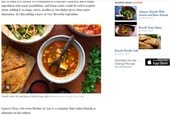It's a worldwide phenomenon that new cultures form where youngsters gather to hang out or to live. In Seoul, for example, many of its neighborhoods -- Gangnam, which represents the glamorous nightlife; Hongdae, a center of campus life; Myeongdong, known as the nation's number one shopping district -- have young people at the heart of their popularity. These hot places and trendy locales naturally come to the attention of tourists as well.
Recently, more and more tourists are opting to travel on their own, rather than get involved with a group package tour. They tend to share a common tendency these days, that they prefer visiting places where young people hang out, where they can catch a glimpse of people's normal daily lives. This is in sharp contrast to travel patterns in the past, where tourists tended to visit some famous, officially promoted tourist attraction.
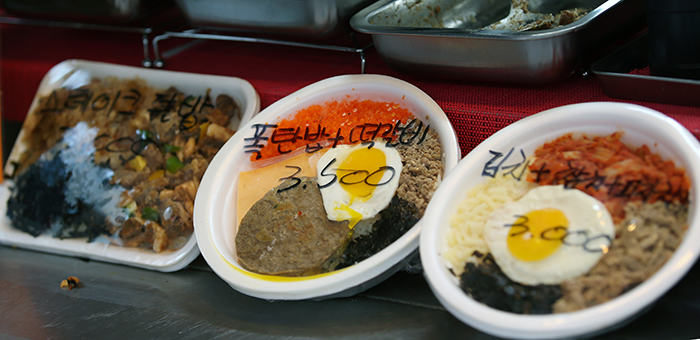
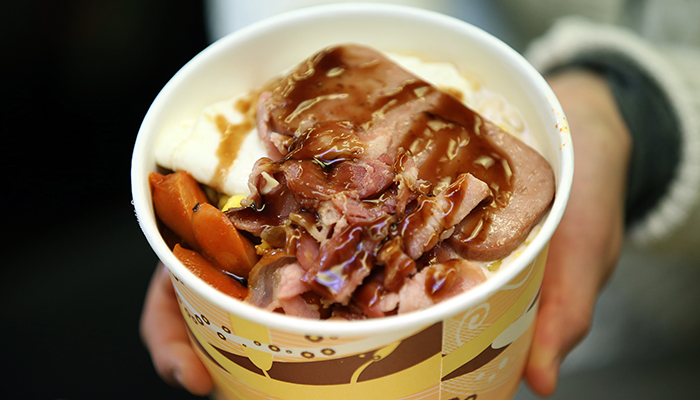
One of the trending neighborhoods where tourists can get such a new experience is the "Cup Rice Alley," better known as the "Cupbap Road" among Koreans. It's an alleyway near Noryangjin Station where food stalls sell plastic cups or bowls of rice or barley mixed with a variety of toppings, both meat and vegetable. Surrounded by bookstores and private cram schools, Noryangjin is home to many students preparing for the big exams, such as the civil service examination, the police academy or the university entrance exam.
Street food began to be sold in the neighborhood around 1998, when the nation was just emerging from its financial crisis. At around that time, it was common to find more regular street food, such as stir-fried rice cakes in a thick hot sauce (tteokbokki), blood noodle sausage (sundae), and an assortment of deep fried meats and vegetables. This simple & delicious, and still pocket-friendly, street food was a fitting choice for the students who have no time and no money. As it developed, the neighborhood grew in popularity, with the opening of the cluster of "cup rice" stalls that sell steamed rice with various toppings, considered to be more nutritional than traditional street food.
Menus among the street stalls are quite varied. They're also economical. The stalls offer wide choices of combined toppings, such as a combination of kimchi and bulgogi, of grilled pork belly (samgyeopsal) stir-fried pork (jeyuk bokkeum), of fried kimchi and tuna with flying fish roe and of stir-fried pork and tuna with mayonnaise, all served in a single-serving large plastic dish. Students can select whatever toppings they want, including Spam, sausage and cheese. Basic dishes run around KRW 3,000 and prices go up by KRW 500 for each additional topping.
Besides the varieties of "cup rice," plenty of other food can be found along the alleyway, including rice with curry sauce, Japan-style fried rice with bean sprouts, rice noodles made by a Vietnamese chef, and even Turkish kebabs. Most of the stalls are kind of crowded and don't offer any seating. Diners get rained on and endure the winter chill while ordering and eating, but it seems to be more fun to put up with these inconveniences: tourists continue to flock here to see how people really live and to experience the true "Korea."
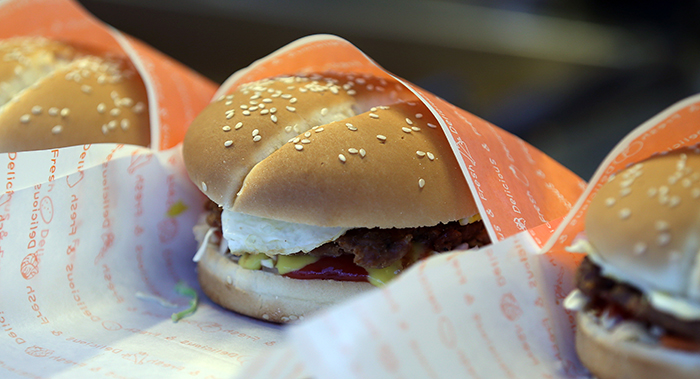
It's not only the "rice cups" that can be a substitute for a full meal. The streets of Noryangjin have a variety of delectable non-rice offerings on sale, too. Among them are home-made burgers stuffed with patties, eggs and carrots, spicy chili sausages, pancakes with corn salad and sausage, as well as small desserts such as sweet pancakes with chocolate cream, waffles with ice cream or fruit and fresh juice. All are offered at affordable prices, between KRW 1,500 and 2,500. With only KRW 10,000, you can enjoy a whole range of tastes and flavors.
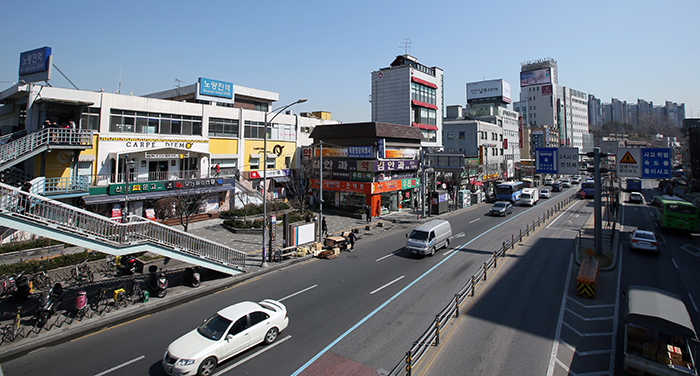
One merchant along Cup Rice Alley said, "The neighborhood is getting more and more popular among tourists and solo travelers. They can benefit from its closeness to the fishery market, just over the pedestrian walkway. These days, most tourists are from mainland China though we see many tourists from the West, too, like the U.S. and Canada."
By Lee Seung-ah
Photos: Jeon Han
Korea.net Staff Writers
slee27@korea.kr
Recently, more and more tourists are opting to travel on their own, rather than get involved with a group package tour. They tend to share a common tendency these days, that they prefer visiting places where young people hang out, where they can catch a glimpse of people's normal daily lives. This is in sharp contrast to travel patterns in the past, where tourists tended to visit some famous, officially promoted tourist attraction.


A cup of rice mixed with a wide variety of toppings, such as Spam, kimchi, grilled short rib patties and fried eggs, is served at many of the 'cup rice' stalls around Noryangjin Station.
One of the trending neighborhoods where tourists can get such a new experience is the "Cup Rice Alley," better known as the "Cupbap Road" among Koreans. It's an alleyway near Noryangjin Station where food stalls sell plastic cups or bowls of rice or barley mixed with a variety of toppings, both meat and vegetable. Surrounded by bookstores and private cram schools, Noryangjin is home to many students preparing for the big exams, such as the civil service examination, the police academy or the university entrance exam.
Street food began to be sold in the neighborhood around 1998, when the nation was just emerging from its financial crisis. At around that time, it was common to find more regular street food, such as stir-fried rice cakes in a thick hot sauce (tteokbokki), blood noodle sausage (sundae), and an assortment of deep fried meats and vegetables. This simple & delicious, and still pocket-friendly, street food was a fitting choice for the students who have no time and no money. As it developed, the neighborhood grew in popularity, with the opening of the cluster of "cup rice" stalls that sell steamed rice with various toppings, considered to be more nutritional than traditional street food.
Menus among the street stalls are quite varied. They're also economical. The stalls offer wide choices of combined toppings, such as a combination of kimchi and bulgogi, of grilled pork belly (samgyeopsal) stir-fried pork (jeyuk bokkeum), of fried kimchi and tuna with flying fish roe and of stir-fried pork and tuna with mayonnaise, all served in a single-serving large plastic dish. Students can select whatever toppings they want, including Spam, sausage and cheese. Basic dishes run around KRW 3,000 and prices go up by KRW 500 for each additional topping.
Besides the varieties of "cup rice," plenty of other food can be found along the alleyway, including rice with curry sauce, Japan-style fried rice with bean sprouts, rice noodles made by a Vietnamese chef, and even Turkish kebabs. Most of the stalls are kind of crowded and don't offer any seating. Diners get rained on and endure the winter chill while ordering and eating, but it seems to be more fun to put up with these inconveniences: tourists continue to flock here to see how people really live and to experience the true "Korea."

Home-made burgers sell in the streets of Noryangjin. They're made with thick meat patties, fried eggs and carrots.
It's not only the "rice cups" that can be a substitute for a full meal. The streets of Noryangjin have a variety of delectable non-rice offerings on sale, too. Among them are home-made burgers stuffed with patties, eggs and carrots, spicy chili sausages, pancakes with corn salad and sausage, as well as small desserts such as sweet pancakes with chocolate cream, waffles with ice cream or fruit and fresh juice. All are offered at affordable prices, between KRW 1,500 and 2,500. With only KRW 10,000, you can enjoy a whole range of tastes and flavors.

The neighborhood around Noryangjin Station is known for its abundant food choices. There's the Noryangjin Fisheries Wholesale Market to the north of the station, and on the opposite side sits the Cup Rice Alley.
One merchant along Cup Rice Alley said, "The neighborhood is getting more and more popular among tourists and solo travelers. They can benefit from its closeness to the fishery market, just over the pedestrian walkway. These days, most tourists are from mainland China though we see many tourists from the West, too, like the U.S. and Canada."
By Lee Seung-ah
Photos: Jeon Han
Korea.net Staff Writers
slee27@korea.kr
